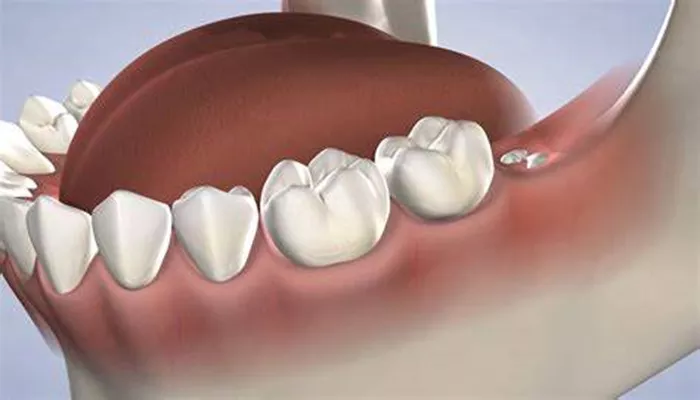Wisdom teeth, also known as third molars, typically emerge in late adolescence or early adulthood. Their extraction is a common dental procedure due to potential complications such as impaction, infection, or misalignment. Post-extraction healing is a crucial phase that can significantly affect the overall outcome and recovery process. This article delves into the various stages of wisdom tooth healing, providing insights into what to expect during this period and how to ensure optimal recovery.
1. Immediate Post-Extraction Phase
Initial Appearance and Discomfort
Immediately after wisdom tooth extraction, the surgical site will appear as an open wound. The gum tissue around the extraction site will be swollen, and there may be some bleeding. This is a normal response to the procedure and should be managed with prescribed post-operative care, including bite gauze and medications to control pain and swelling.
Visual Indicators:
Swelling: The surrounding area will likely be swollen, with visible inflammation. This is a common reaction and should gradually subside.
Bleeding: A small amount of bleeding is expected. Persistent bleeding should be reported to your dentist.
Sutures: If stitches were used, they may be visible or feel prominent in the healing site.
SEE ALSO: Is It OK to Talk After Wisdom Teeth Removal?
2. Early Healing Stage (Days 1-3)
What to Expect During Early Recovery
During the first few days post-extraction, the healing process begins with clot formation and tissue inflammation. The initial discomfort usually peaks within 48 hours and then starts to diminish. This period is crucial for the formation of a blood clot in the socket, which serves as the foundation for new tissue growth.
Visual Indicators:
Clot Formation: A dark red or brown clot should form in the extraction site. This is a sign of the body’s natural healing process.
Continued Swelling: Swelling may persist but should start to decrease. Application of ice packs can help manage this.
Mild Bruising: Bruising around the extraction area can occur but will gradually fade.
3. Mid-Healing Stage (Days 4-7)
Progress in Healing and Tissue Regeneration
By the end of the first week, significant progress in the healing process is usually visible. The inflammation should decrease, and the discomfort should be less severe. The soft tissue surrounding the extraction site starts to regenerate, and the initial clot is replaced by granulation tissue.
Visual Indicators:
Reduction in Swelling: Swelling should continue to decrease, and bruising may become less noticeable.
Granulation Tissue: The extraction site may appear slightly pink or red as granulation tissue forms.
Decreased Discomfort: Pain and discomfort should be significantly reduced, though some sensitivity may persist.
4. Late Healing Stage (Weeks 2-4)
Advanced Healing and Bone Integration
During the second to fourth week, the healing progresses to involve bone tissue. The soft tissue continues to mature, and the socket starts filling with new bone. At this stage, the extraction site should be mostly healed, with only minor residual swelling or sensitivity.
Visual Indicators:
Matured Soft Tissue: The gum tissue should appear smooth and closer to the surrounding healthy tissue.
Bone Formation: The socket may look less deep as bone fills in the area. This process is gradual and may continue for several months.
Minimal Swelling or Discomfort: Any remaining swelling or discomfort should be minimal.
5. Long-Term Healing (Months 1-6)
Complete Healing and Final Adjustments
Full healing of the wisdom tooth extraction site can take several months. The gum tissue and bone continue to remodel and integrate fully. While most people experience significant recovery within a few weeks, the site may continue to evolve as the bone completes its healing process.
Visual Indicators:
Complete Gum Healing: The gum tissue should blend seamlessly with the surrounding area.
Final Bone Integration: The bone should be fully integrated, with no noticeable indentation or defect at the extraction site.
No Persistent Symptoms: There should be no residual pain, swelling, or sensitivity.
Factors Affecting Healing
What Can Influence the Healing Process
Several factors can impact the speed and quality of wisdom tooth healing:
Oral Hygiene: Maintaining excellent oral hygiene is crucial to prevent infection and ensure proper healing. Regular brushing, flossing, and use of antimicrobial mouthwash are recommended.
Diet and Nutrition: A balanced diet rich in vitamins and minerals supports tissue repair and overall healing.
Smoking and Alcohol: Smoking and excessive alcohol consumption can hinder healing and increase the risk of complications.
Follow-Up Care: Adhering to post-operative instructions and attending follow-up appointments helps monitor healing progress and address any issues promptly.
Common Complications and Concerns
When to Seek Professional Help
While most wisdom tooth extractions heal without complications, some issues may arise:
Infection: Signs of infection include increased pain, swelling, redness, and discharge of pus. Immediate dental consultation is necessary if these symptoms occur.
Dry Socket: A condition where the blood clot is dislodged or dissolved prematurely, leading to intense pain and delayed healing. Symptoms include severe pain and an empty socket appearance.
Prolonged Swelling or Bleeding: If swelling or bleeding persists beyond the expected timeframe, it’s important to consult your dentist.
Conclusion
Understanding what a healing wisdom tooth looks like can help alleviate concerns and ensure a smoother recovery process.
From the initial post-extraction phase through to complete healing, knowing what to expect at each stage can help you manage your recovery effectively. By following your dentist’s post-operative instructions and maintaining good oral hygiene, you can support optimal healing and return to your regular routine with minimal discomfort.

